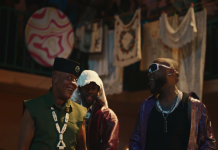As YouTube becomes an increasingly crowded stage for Nollywood content, a heated debate has reignited over how actors are cast.
The question at the heart of the issue: are producers leaning too heavily on recognizable faces at the expense of raw talent?
Veteran actor Kanayo O. Kanayo has emerged as a leading voice of criticism. In a video message shared in September 2025, he decried what he sees as an overemphasis on aesthetic appeal over acting skill in YouTube-led Nollywood productions. “Movie-making is not about having a fine face, it’s about being a good actor, a good performer,” he insisted, adding that this growing trend threatens to suppress new talent.
Kanayo has committed to using his own YouTube channel as a platform to spotlight storytelling and performance rather than visibility or physical appeal.
Complementing Kanayo’s stance are industry professionals like Biodun Stephen, who have indirectly raised concerns about casting practices. In recent interviews and public remarks, she has advocated for more inclusivity, urging filmmakers to give lesser-known actors chances and diversify how and where new talent is discovered.
Many producers continue to favor familiar actors for several reasons:
Audience draw: Big names bring in views and clicks. On YouTube, visibility often translates to revenue.
Perceived safety: Using well-known faces is seen as a guarantee of performance, even if that boils down to popularity rather than skill.
However, this approach is increasingly being questioned for its long-term effects on innovation in storytelling.
According to Kanayo, relying primarily on “selling faces” risks creating a bottleneck in Nollywood: fewer opportunities for newcomers, repetitive casting, and a narrowing of creative expression. He warns this could erode the industry’s ability to continuously renew itself.
Some viewers support this critique. Fans and actors alike have expressed frustration over recycled casts and formulaic plots in YouTube rentals and movies — complaints that the industry is favoring style over substance.
Though critics are vocal, signs of change are modest but evident. Kanayo’s own resolve to cast based on merit, and calls from industry creatives for supporting “unknowns” suggest a possible pivot. Still, for many, this moment feels like a crossroads: maintain the status quo of “popular faces,” or take the riskier but potentially more rewarding path of nurturing raw talent.
Nollywood’s move toward digital platforms has unlocked new possibilities — but it has also magnified the tension between commercial success and artistic growth. The rising voices challenging the “fine face” culture are raising more than complaints; they’re pushing for an industry that balances star power with substance.
Whether this shift gains momentum depends largely on producers, audiences, and whether they value appearance over artistry — and are willing to recalibrate what counts in Nigerian storytelling.

































